#sao light novel
Explore tagged Tumblr posts
Text

Autistic Kirito evidence 😌
#kirito sao#sao kirito#kirito kirigaya#jaimethinks#anime#sao light novel#light novel#sword art online
23 notes
·
View notes
Text
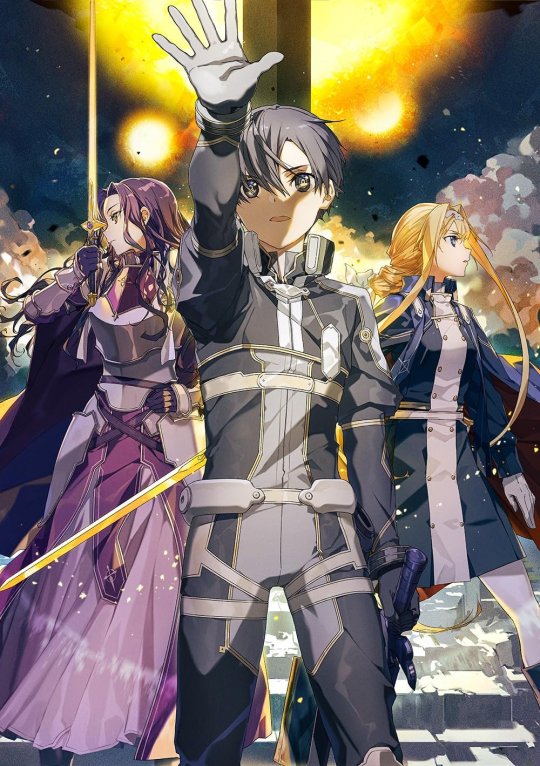
#oficial art#sao#sword art online#sao unital ring#unital ring#sword art online unital ring#kirito#kazuto kirigaya#kirigaya kazuto#kirito sao#sao kirito#alice sao#sao alicization#sao alice#sao anime#reki kawahara#alice zuberg#alice schuberg#alice synthesis thirty#ソードアート・オンライン#fanatio synthesis two#sao novel#light novel
76 notes
·
View notes
Text
bro why the fuck did the ending of the new sao abridged episode go that deep holy shit what the fuck
#i never got that far in the actual show so idk if it's like the show/light novel but god DAMN#sword art online#sword art online abridged#sao abridged
364 notes
·
View notes
Note
So first off, I'd like to thank you for your role in helping to spread the transfem Kirito brainrot. I haven't been this excited over SAO in over a decade outside of the abriged series, and I'm somehow unironically enjoying myself here.
Which brings me to point the second: If I'm going to take this swan dive, I may as well do it properly. You've said a couple of times that you have pdfs of the light novels. Is there any chance you might be able to share a link to those? Thank you in advance.
gladly even!
here you go:
good luck!
(it's a lot)
14 notes
·
View notes
Text


I got more novels of my favorite series, and my mangas are still behind.
#i know i missing a lots of volumes of sao but hey i need aob first#Ascendance of a Bookworm#Sword Art Online#light novels#Mangas
7 notes
·
View notes
Text
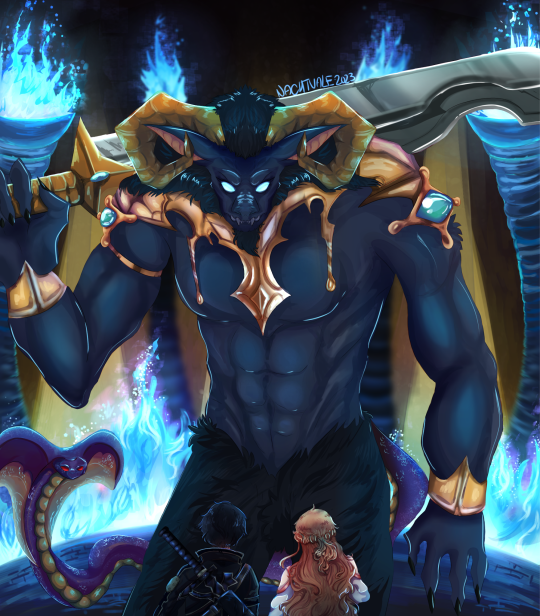
IT'S DONE
Free from my rendering prison <3
Really love how it came out! Though if there's one thing I'm not completely satisfied with, it's the snake tail, and I did make a mistake with the armor— but by the time I realized, I was already like 75% through rendering, so, rip lmao
46 notes
·
View notes
Text
Cheongmyeong: Sorry, what was I talking about?
Yunjong: You were apologizing.
Cheongmyeong: That doesn't sound like me
#source: sao abridged#<-Ep.7#return of the blossoming blade#rotbb#cheong myeong#yun jong#yunjong#incorrect quotes#incorrect rotbb quotes#cheongmyeong#the stress of not having read the novel vs. the laziness of not having the energy to read the novel fight#/light-hearted#queue#my quotes
78 notes
·
View notes
Text
Alice is one of my favourite characters of SAO as well as one of my favourite partners for Kirito. One of the things about her that I can't get over is unlike any of Kirito's partners or female friends that have feelings for him, Alice refuses to back down.
Whenever the rest of the girls found out about Kirito's romantic relationship with Asuna, they all backed off from pursing him, allowed the couple to be happy together while also forming a friendship with Asuna. They all still remain in love with Kirito and though they have shown some jealous moments occasionally, they accept his heart belongs to Asuna... but Alice on the other hand isn't willing to give up just yet.
Unlike the rest of the girls, Alice isn't planning on giving up on Kirito and though she also becomes friends with Asuna, she is also the very first of the girls to officially become rivals with her for Kirito's heart! In a way, they are frenemies! In short, I love how Alice became the first real rival for Asuna for Kirito's love. She's not backing down like the rest of his admirers and is willing to fight Asuna for his heart. This is one of my favourite and most underrated romantic rivalries. HA!
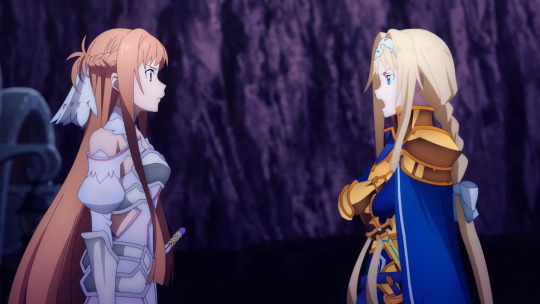
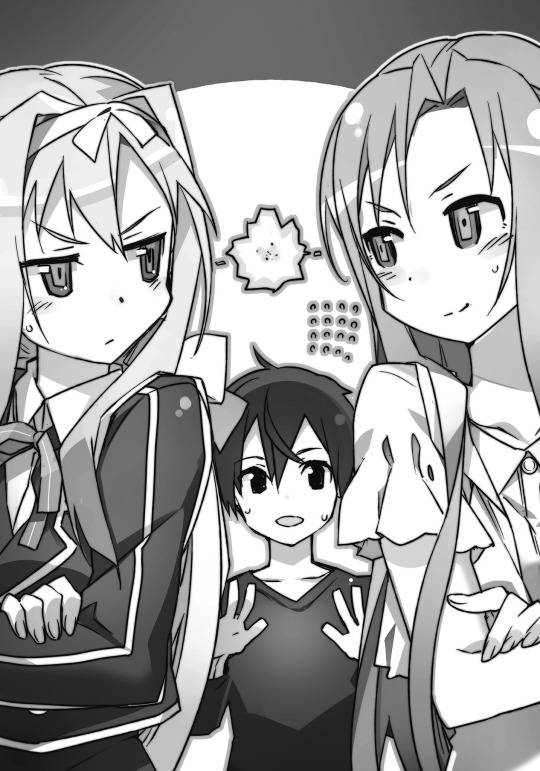
#Sword Art Online#My Thoughts#Sword Art Online Alicization#SAO#War of Underworld#Anime#Light Novel#Asuna#Alice#Kirito
8 notes
·
View notes
Text
Delivery Man : Delivery from Amazon.
Kirito : Amazon? I didn't order any package. I thought I ordered the Kung Pao Chicken with a side of soup. But this will do.
Delivery Man : Have a nice day.
(Closes door)
Kirito : Alright. My new Playstation has arrived!
(opens box to sees something)
Kirito : Hey, where's my Playstation?
(an arm comes out of the box)
Kirito : (yelps) Whuh?...
??? : Hello? Kirito is that you? Thank goodness I have arrived at your house! Now please get me out of this box, so that I can find some proper clothes to wear and--
Kirito : Woah! A Giant talking box with a human arm! Die you evil box!
*WHACK*
Alice : Ow! Kirito! Watch where you hitting with that broom!
Kirito : Alice? Why are you not wearing clothes...in the box?
Alice : I was shipped by Amazon. Good thing they come in travel sizes with any suspicious packages.
Kirito : Oh, now I see what's going on. How can you barely fit in that thing?
Alice : Just needed a little ride. After all, I was downloaded from data, from where?...
Kirito : It's because I rented for free.
Alice : No I was made from the help of that is Lain Iwakura.
Kirito : Who's Lain Iwakura?
Alice : You know, that 14-year old computer wizard who does stuff on the net, she's a popular one that knows about computers and wires.
Kirito : Yeah, same old, same old. Plus, she's a an intellectual in cases of many internet stuff, but just to remind you, the internet is full of secrets and you might not like it, cause it's a bad sign.
Alice : I know that. Just please get me out of this.
Kirito : Alright.
(Alice gets up from the box)
Kirito : Holy cow, you're real, hot, and even indecency.
Alice : That's because I forgot to put on some pants and clothes. And you are right, I am kinda hot. Don't say I warned you about not wearing any clothes and going full naked in publicity. It's a crime in the real world.
Kirito : Mind if I can take a look at it?
*SMACK*
Kirito : Ow!
Alice : And keep your mitts of my hot bod, but you may touch it once, and no groping!
Kirito : Welcome to my world. I'm glad that Alicization is over, I can't still figured it out why was I in a coma. Oh that's right...
Kirito : I had dream of a harem in the world of Arabian Nights.
Alice : With the Seven Rings in Hand?
Kirito : You're right, they always do that. So, no taking advantage of me, eh? I bet you're too corny for once of a life-time meal.
Alice : Don't speak it like that.
Kirito : So...I'm still worried with my order, I ordered a Playstation instead of ordering Kung Pao Chicken with a side of soup.
Alice : That was lunch, also...I was the one who ordered it, which is my food.
Kirito : Well that's a downer.
Alice : Since I'm gonna be in the real world, I have something for you.
Kirito : Oh, you have something that I was not be appreciated with kindness, hopefully, I got all the respect I needed to make people regret.
Alice: No, but this came in hand. (holds out a Playstation 5)
*Sonic 3 1-up jingle*
Kirito : MY VERY OWN PLAYSTATION! It's finally here! Where did you get it!?
Alice : Well...there's one place that I founded in America.
Kirito : Where would you even get a Playstation 5 from?
"Meanwhile in Maryland USA..."
Me : Where did I put my Playstation 5 that I never used it?
(pans back to Japan)
Kirito : This is sweet! I'm gonna be pro when everyone sees me playing cool games! But on terms of it, does this one have playstation vue?
Alice : Sure, it's got plenty of entertainment!
Kirito : Sweet! Hey, guys! Got me a new Playstation. Also, get this girl some clothes, she's naked in the house!
Suguha : Aw yeah! Sweet! I'm ready for some Playstation!
Alice : Looks like my work here is done. Also, I really need to get off the Zenra in Japan. My body is too hot for this. I wonder how the others are doing fine?
*meanwhile in heaven*
All : (indistinctly in chatter)
Eugeo : (sighs) Every dog has it's days, one of these days. Whatever you do, don't trust anyone in cyberspace. This is fine by me.
Sachi : Hey, could you lend us a hand? I would like a few words to prove to you, that I'm gonna be a Christmas angel when I arrive to his house.
Eugeo : Here we go again.
(Iris shot)
*cues NSMB Game Over*
(Iris out)
#sword art online#sao#sword art online alicization#sao2#funny#anime#amazon#playstation#bandai namco#kadokawa#light novel#dengeki bunko#comedy#kirito#alice sao#alice#asuna#eugeo#sachi
3 notes
·
View notes
Text

everywhere i go, i see it
7 notes
·
View notes
Text
Happy Pride Month! ❤️🧡💛💚💙💜🖤
SAO Pride Week starts on June 4th! We can't wait to see what you guys come up with!

#sword art onine ii#sword art online#sao#sword art online alicization#sword art online ii#sword art online war of underworld#sword art online alternative ggo#sao unital ring#sword art online light novels#sao progressive#saoprideweek2023
12 notes
·
View notes
Text

Started this book yesterday!
@valkyrie108
1 note
·
View note
Text
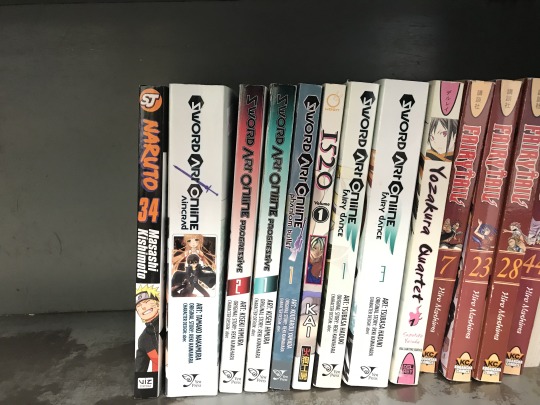
these lasted... like 28 SECONDS on the shelf...
🏃♂️
#used books#manga#thrift store#sword art online#sao#naruto#aincrad#comic books#light novel#thrifting#thrift books#fairytail manga
4 notes
·
View notes
Text
PROJECT RE:VIVE MASTERPOST
BOOK 1:


OTHER INFORMATION
[To be added]
#writing#ao3#light novels#Sci-fi#SAO AU#SAO rewrite#I think if I put this on the main tag I’d get yelled at.#still trying to think of the best way to format this
2 notes
·
View notes
Text

When delivery bends the book...
#sword art online#sao#sao unital ring#unital ring#sword art online light novels#asuna#asuna yuuki#excuse my copy of pragmatics of word order flexibility#im doing linguistics things always
4 notes
·
View notes
Photo

The Story The world building in this novel is fantastic. The amount of detail this book goes into how the Rath works is outstanding and is a joy to read... For the first quarter of the book. The rest is slow paced, dull, pointless filler and scenes that go nowhere. It was so boring, that after I finished the novel, I fell asleep. I am not kidding! The book was SO boring that it made me tired and fall asleep (and mess up my sleep pattern for a week!) that should tell you how BAD this novel is. The Characters We don't learn anything about the old characters and the new characters are forgettable place holders that are just boring. What can I say, it's just dull! The Illustrations The illustrations are as detailed as ever, and there are more of them than the previous volume, but the problem I have with them is that the first half is FULL of them, while the second half is just bare and only has 1 illustration at the end of the volume. And is it me, or does Kirito looks stupid in the last illustration? I don't know why he looks so deformed in this Illustration! Final Thoughts Other than the first quarter, this novel is a dull, boring read. I have read slow paced novels before, heck, The Isolator and NO.6 are slow pace and they are my favourite light novels. But this is NOT the way to do it! It feels like they're dragging this series out just to get more money! I will give this series one more chance (since the previous novel was a MASTERPIECE!) but if that novel doesn't succeed, it'll be time to say goodbye to SAO... The Story 2/5 The Characters 0.5/5 The Illustrations 2.5/5 Overall 1.5/5
1 note
·
View note